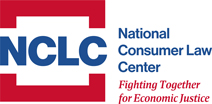What is a Property Assessed Clean Energy (PACE) Loan?
PACE programs, authorized by local governments under state legislation, offer loans for residential and commercial renewable energy and efficiency improvements. Energy efficiency is a pivotal tool for reducing energy costs and enhancing home energy security in low-income households. While well-designed PACE programs may save energy and/or money for higher-income households, they are inappropriate for homeowners eligible for free or lower cost efficiency programs. Further, PACE has few consumer protections. Expensive loans that are often pushed by aggressive contractors for projects with questionable savings pose serious risks of predatory lending. Reports are already surfacing of problems that mimic the home equity scams and subprime abuses of the 1990s and 2000s.
PACE loans are offered through private contractors but are secured by a property tax lien and are collected through the tax bill. Many localities fund the program by issuing bonds linked to homeowner tax payments. These bonds are then sold to a private company that securitizes them and sells them on Wall Street. The local government often receives a fee for participating.
Tax payments are due once or twice per year unless taxes are escrowed with the homeowner’s regular mortgage payment. There are several PACE models, but typically PACE loans are first-priority liens that jump ahead of existing mortgages. Features of California’s PACE program (known as HERO―Home Energy Renovation Opportunity) include:
- Private contractors solicit and enroll homeowners, often through door-to-door solicitations.
- Generally 8% to 9% interest plus a fee. Can add thousands of dollars per year to the property tax bill for 5, 10, or even 20 years.
- Applications can be approved from the doorstep through a phone call and contracts may be e-signed (electronically) on the spot.
- An energy/water audit is recommended but is not required before the homeowner selects from a lengthy list of eligible energy efficiency, water efficiency, or renewable products.
- The contractor performs the installation and is paid by the local government.
Consumer Concerns
- Underwriting does not check whether borrowers can afford the loan; there is no guarantee that energy savings will pay for the improvements.
- No clear remedies for injured homeowners.
- Offered to low-income homeowners who are eligible for free energy efficiency improvements through the federal Weatherization Assistance Program or other lower cost options, but no requirement to tell homeowners about these free or low-cost options.
- Nonpayment risks tax foreclosure and default on the homeowner’s traditional mortgage.
- Taking on a PACE lien may violate existing mortgages (even if payments are made); and may cause problems when selling or refinancing the house.
- PACE liens may not be covered by the Truth In Lending Act (TILA) or Real Estate Settlement Procedures Act (RESPA), which provide:
- Marketed through door-to-door sales and telemarketers, posing a high risk of deceptive sales tactics and other home-improvement contractor abuses.
- No protections against upselling other products; less assurance of energy savings than through the federal Weatherization Assistance Program.
- Fannie Mae and Freddie Mac will not purchase loans on properties with PACE liens so it can be hard to refinance or sell those properties.
Recommendations
- Require assessment of ability to repay.
- Screen low-income households for eligibility for the free low-income Weatherization Assistance Program and other no- or low-cost programs.
- Mandate compliance with TILA and RESPA.
- Require compliance with the FTC’s Holder Rule, so consumers have remedies against the holder of their loan, and so consumers aren’t required to pay for defective repairs or equipment or scams.
- Before work starts, require independent verification that the consumer signed the contract and understands the costs and risks. Before the contractor is paid, independently verify that the work was properly completed. Require robust financial counseling for vulnerable homeowners.
- Require an independent energy audit to identify cost-effective improvements and to reduce the risk of unnecessary work. An exception may be made for emergency repairs if the measures are limited to addressing the emergency.
- Adopt rules that discourage upselling and products not recommended by the energy audit.
- Establish a homeowner protection fund for those injured by judgment-proof contractors.
- Ban deceptive tactics (i.e., claims that “it’ll pay for itself” unless that is guaranteed). Unfair practices by an auditor or contractor should be automatic violations of state laws prohibiting unfair and deceptive acts and practices.
For More Information
National Consumer Law Center comments to U.S. Department of Energy (Aug. 18, 2016): http://bit.ly/2ceBOJF
Contact: NCLC staff attorneys Charlie Harak (charak@nclc.org) and Lauren Saunders (lsaunders@nclc.org).
